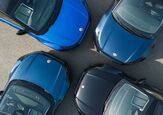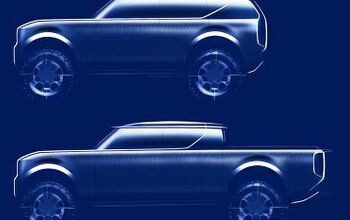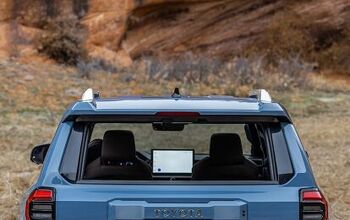George Hotz and Our Self-Driving Future

Bloomberg published an interview with hacker-slash-inventor George Hotz earlier this week where it showcased his efforts in building autonomous car technology. While many readers might be quick to jump on his ideas as the first coming of affordable autonomous vehicles, we need take a step back and look at the details.
The Bloomberg article labels Hotz as “the first person to hack the iPhone,” but many in the iPhone hacking community dispute the label and state Hotz was merely the first person to perform a carrier unlock to allow the phone to be used outside of AT&T.
I contacted a few of the researchers that worked on the iPhone in 2007 and received a response from Jonathan Zdziarski. He states that the iPhone had already been hacked before Hotz came along. He also confirmed that Hotz was the one to figure out a baseband unlock for the phone, but he was eventually ousted from the hacking groups “due to his strong desire for recognition in the media.”
That same desire for recognition may explain the reveal of his current unfinished self-driving project earlier this week.
Hotz purchased a 2016 Acura ILX in October with the intention of building a self-driving system. He has since built a Linux-based system that interfaces with the car to perform some autonomous operations when used on the highway. The components for the initial build came in at a cost of $20,000 (on top of the $30,000 cost of the car), but his goal is to make a final product that costs closer to $1,000.
The video shows a mashup of components that includes a roof-mounted LIDAR device, a front-mounted camera, and a CANBUS interface that are all connected to an Intel NUC minicomputer running Ubuntu. The article states that he plans to forgo the LIDAR equipment on the production build and use a small $13 camera like you would find on a smartphone.
I reached out to Hotz to get a better explanation of how he plans to accomplish this goal and get a better view of his current testing.
The Velodyne LIDAR puck was one of the central components of his original system, but Hotz states that Bloomberg missed the point and he has already eliminated LIDAR.
“We are currently only using one camera and the stock forward-facing radar. The LIDAR, Velodyne puck, was just used to gather training data and help train our neural network. In fact, we turn it off while the system is engaged as a neat demo to potential investors. The whole system actually used for driving is well under $1,000,” states Hotz.
The single camera he is using right now is a Point Grey unit with the AR0134 sensor, which costs about $575. Since his plan is to use multiple, cheaper cameras. Hotz says he recorded video with his smartphone and ran it through his self-driving network in a demo, but further engineering is needed to use that type of camera in a live test.
Regarding the system’s accuracy, Hotz claims that it performs quite well at night due to the contrast in lane markings, and works well in light rain, but heavy rain is an issue as he has not adapted the system to recognize windshield wipers just yet.
Hotz has MobilEye in sight, one of the biggest suppliers of driver-assist technology that claims automotive manufacturers such as BMW, General Motors, Honda and Tesla its clients. MobilEye’s technology is outdated and overly complex, claims Hotz. The Acura ILX Hotz chose as a testbed is a MobilEye-equipped vehicle, but he explained that all of the MobilEye equipment on the ILX has been unplugged and his system provides a better replacement while maintaining the safety rating of the vehicle.
Hotz has been in contact with Elon Musk, he said, and worked on a potential idea to replace the MobilEye components that are used for Tesla’s autopilot features. He also claims he declined a job offer from Musk and instead chose to go out on his own to try and crush MobilEye. This caused some commotion on the MobilEye front, prompting Tesla to release a passive-aggressive blog post stating that it’s unlikely that a single person can design an autonomous system to rival its current product.
“This is the true problem of autonomy: getting a machine learning system to be 99% correct is relatively easy, but getting it to be 99.9999% correct, which is where it ultimately needs to be, is vastly more difficult,” said Tesla in the post.
This accuracy factor is central in explaining why Hotz’s system is currently just a cool project from an obviously intelligent individual and not yet ready for widespread introduction.
As noted above, Hotz wants to remove LIDAR from his application and build a camera-only system, effectively lowering its overall cost. However, camera-based systems also reduce accuracy and — when safety is involved — 99-percent accuracy still means that an accident is possible on every one-hundredth interaction on the road. This explains why current production and R&D systems use a complex array of sensors and software.
There is no doubt that Hotz is advancing the technology, but his current testing is a lot less safe than testing completed by larger companies, and is quite unlikely to speed up adoption of self-driving systems in the near future.
MobilEye sells the 560 Collision Prevention System for around $800. It uses a single camera similar to what Hotz is currently running, but the main difference between the two is that the MobilEye system is only used for passive alerts. The Mobileye system can be installed to detect pedestrians, bicycles, motorcycles and cars in urban and highway settings. It’s equipped with forward collision and lane departure warning along with traffic sign recognition. Most of the monitoring technology is there and in a neat little package, so it’s not a far stretch to envision Mobileye integrating its EyeQ Vision chip with a CANBUS interface to create an active autonomous system. However, the accuracy of such a minimalist system is not at a point yet where it can be safe to use.
The user’s manual for the MobilEye 560 system even points to a warning about the accuracy of the single camera system stating: “The Mobileye 5-series systems do not guarantee 100% accuracy in detecting vehicles, pedestrians or driving lanes, or in providing warnings for all potential road hazards. In addition, road, weather and other conditions can adversely affect the Mobileye 5-series systems’ recognition and response capabilities. Any conditions that create partial or full blockage of the camera’s view will result in no or reduced functionality of the Mobileye 5-series systems.”
I could not find Hotz or his company, Comma.ai, on the California DMV list of permit holders for autonomous vehicle testing. But Hotz says he is not targeting Level 3 automation at this time and, according to his legal team, is clear of the law since he is considered a driver assistance system like that offered by Tesla.
I applaud the initiative from Hotz and willingness to invest his time and money. And I hope that he can spur further development of self-driving technology. However, his system is still somewhat primitive for introduction in the near future.
For his part, he does state that there are still thousands of hours of training data that need to be put into the system by driving around and he plans to build a simulator so that he can add emergency situations to the mix.
I hope that his demonstration is more than a publicity stunt for a pet project and his freedom from corporate bureaucracy allows him to develop some novel technology that can make future driver assistance and autonomous systems more capable. Hotz has the unique skillset of being able to work on hardware and software, which has brought him to this point, but eventually he will need to create or join a team of developers in order to make his technology viable and more accurate.
[Title Image: SHARE Conference/ Flickr/ CC BY-SA 2.0]

More by Bozi Tatarevic
Latest Car Reviews
Read moreLatest Product Reviews
Read moreRecent Comments
- MaintenanceCosts 308/311 is just the rating of the gas engine by itself. The full powertrain power rating, taking into account both power sources is 483/479. The car will do 0-60 in under five seconds. Frankly, I find the idea of that being "underpowered" bizarre.Also, "understated" has never been less fashionable within my lifetime. We are in a moment where everyone wants to make a Bold Statement with everything they do.
- 28-Cars-Later @PoskySo here's some interesting data, Manheim's Used Car index is still 28% higher than shortly before the Plandemic (155 on chart) after declining from a height of 39% (roughly 215) in January 2022, yet interest rates are now more than double on average. Maybe the White House should focus on some deflationomics instead of mucking up everything?
- Dale Had one. The only car I ever bought because of a review in a guitar magazine.Sure was roomy inside for such a small car. Super practical. Not much fun to drive even with a manual.Sent it to college with my stepson where it got sideswiped. Later he traded it in on an F-150.
- Bd2 Hyundai's designs are indeed among the most innovative and their battery technologies should allow class leading fuel consumption. Smartstream hybrids are extremely reliable.
- 28-Cars-Later So now H/K motors will last longer in between scheduled replacements. Wow, actual progress.



































Comments
Join the conversation
Self-driving cars should have at least one complete backup system, if not two. Cheap cameras will not last forever, and a single second between when the human driver realizes the automatic system isn't working and when he or she takes control can be enough for a fatal accident. Cars break down often enough as it is. Imagine if just one tenth of the cars on the shoulder with an overheating problem or a bad alternator had a malfunctioning autopilot. These systems should be significantly better than humans at driving, with much lower failure rates. A last point - look at how the RAM in your computer degrades in a few years, and how often you have to replace your computer because its performance finally gets intolerably slow. If self-drive units degrade at the same rate, it's not planned obsolescence, it's avoidable tragedy in the making.
I'm find the number of comments about how he dresses to be half amusing and half disappointing. I'd be curious to know the age of these commenters. Ultimately the value a person creates, and the worth of their character, has almost nothing to do with the clothes they choose to wear. This seems to be a classic example of cultural expectation. People have expressed a sense of "embarrassment" about his dress. But culture is relative and always changing, and it's worth critiquing. And if I may do so: The person who is embarrassed by a person who down prioritizes style of dress is the one who is perhaps acting in an embarrassing way!